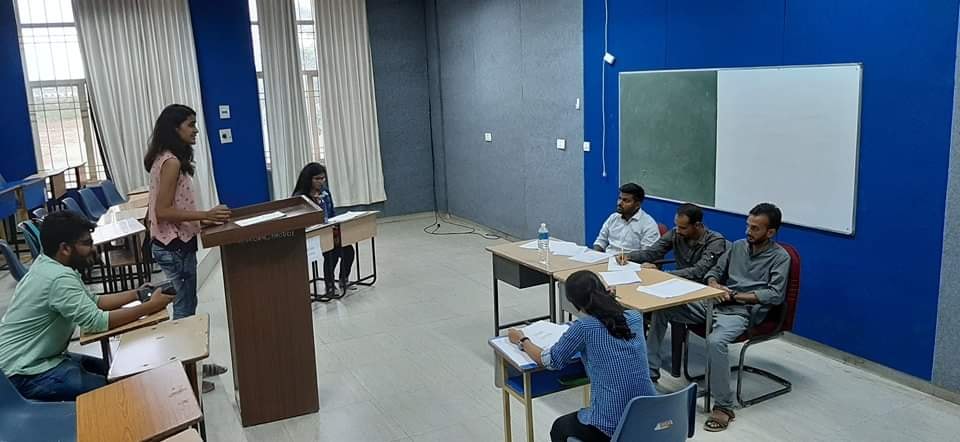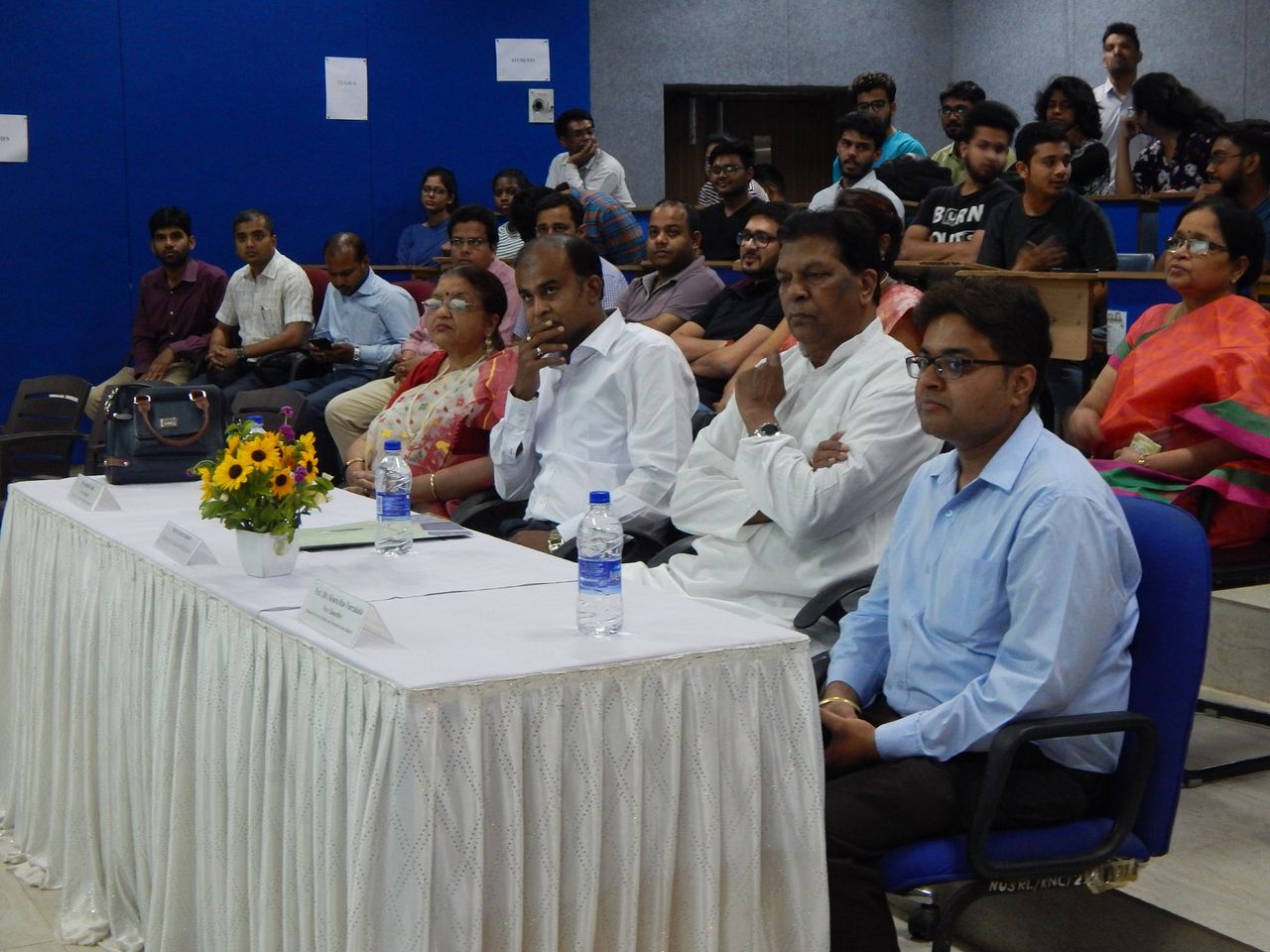Author: Shrinidhi Subramanian is a fourth-year law student at Symbiosis Law School, Hyderabad.
Introduction
Domestic violence stands as an undeniable reality within patriarchal societies, serving as a stark reminder of an unfortunate truth. Often masked by the perceived sanctity of private life, it is an insidious cycle of control and fear that entraps victims into an abyss of emotional turmoil. This complex issue, rooted in power imbalances, finds its stage not in distant, unrecognisable terrains but within the seemingly safe boundaries of our own living spaces. The scope of violence has transformed dramatically over time, expanding to encompass not just physical acts of aggression but also emotional, mental, and financial harm.
In November 2022, the esteemed Madras High Court was presented with a complex and intriguing case. The root of the dispute lay in a complaint filed under the Domestic Violence Act of 2005 – a pivotal law enacted to protect women from familial violence and ensure their rights. A subsequent petition, citing Section 482 of the Code of Criminal Procedure, 1973, was presented, challenging the validity of the original application. The Court’s registry grappled with the question – could a petition under Section 482 be justifiable in this context?
The Domestic Violence Act, since its implementation, has been subject to scrutiny and interpretation, adding fascinating layers of complexity to this case. This statute, in its essence, facilitates the filing of applications by an aggrieved party, a Protection Officer, or any representative, before the Magistrate. This case presents an opportunity to explore further the intricacies and potential interpretations of this profound Act.
Nature of Domestic Violence Cases: Resolving the Conflict
The primary point of contention surrounding the aforementioned Act pertains to the character and procedural essence of the proceedings governed by it. Since the remedies under this Act is compensation and the only scope of penalisation is under Section 31, most Courts consider the nature of the proceedings to be civil in nature. This is clear from the Statement of Objects and Reasons which reads as follows:
“It is, therefore, proposed to enact a law keeping in view the rights guaranteed under Articles 14,15 and 21 of the Constitution to provide for a remedy under the civil law which is intended to protect the woman from being victims of domestic violence and to prevent the occurrence of domestic violence in the society.”
However, since these proceedings are brought before the court of a Magistrate, which is essentially a criminal court of law as provided under Section 6 of the Code of Criminal Procedure, 1973, it underscores an inherent incongruence within the Act’s framework. Furthermore, it is pertinent to understand that the term “Magistrate,” within the ambit of the Indian legal framework, typically refers to a judicial officer vested with specific powers to maintain law and order within a limited jurisdiction.
In the decision of the Supreme Court in Kunapareddy v. Swarna Kumari, the Apex Court unequivocally pronounced that all remedies granted by the Magistrate under the Domestic Violence Act possess a civil character. Subsequently, in the notable judgment of the Division Bench of the Madras High Court in P. Ganesan v. Revathi Prema Rubarani, the Court expounded that while the initial stipulations under the D.V. Act maintain a civil character, it was emphasized that any contravention of a protection order, as stipulated under the Act, would cause the proceedings to transmogrify, thereby assuming a penal character.
Additionally, in 2020, the Hon’ble Supreme Court, in a full bench decision in Satish Chander Ahuja, unequivocally reinforced that proceedings under the DV Act are inherently governed by the Code of Criminal Procedure (Cr.P.C.), as explicitly enshrined in Section 28 of the DV Act. This implies that the very fabric of domestic violence proceedings is intrinsically criminal in nature.
The Madras High Court, in the case of Arul Daniel v. Suganthi, ruled that the character of the proceeding must be ascertained having regard to the nature of the subject matter and the reliefs sought. Furthermore, they stated that the proceedings before the Magistrate are essentially civil in character and a Magistrate exercises his power in cases under Domestic Violence Act as a “Court designata” and not a “Criminal Court”.
In instances where the legislative body aims to delegate authority to a Magistrate or a criminal court for the resolution of civil matters, along with vesting appellate jurisdiction in the Court of Sessions, it becomes imperative to acknowledge that the criminal jurisdiction of said court remains a relevant consideration.
This perspective gains particular significance when examining the nature of legislation such as the Domestic Violence Act. As societal and legal paradigms evolve, there is an apparent inclination towards endowing the Domestic Violence Act with a more pronounced criminal character. This transformation is supported by the recognition that acts of domestic violence inherently infringe upon fundamental human rights, and addressing such transgressions necessitates a robust legal framework that encompasses criminal dimensions.
Domestic violence, as a result, refers to actions that pose a risk to the health, safety, and overall well-being—both mental and physical—of the affected individual. This includes a broad spectrum of abuse such as physical, sexual, verbal, emotional, and economic, committed by anyone in a domestic relationship with the victim. Importantly, the ripple effects of domestic violence are not confined to the victim alone but extend to the broader social fabric, implying that legislative remedies of civil nature may not fully address its implications.
An International Perspective
The Domestic Violence Act was established to realize the goals outlined by the United Nations Committee’s Convention on the Elimination of All Forms of Discrimination Against Women (CEDAW), 1989. In the case of Vandhana v. Srikanth, the Hon’ble Madras High Court had observed that the manner in which Domestic Violence Act is interpreted must conform to International Conventions and norms. International law recognises domestic violence as a violation of basic human rights. In a bold effort to eradicate the affliction of violence against women, the Committee on the Elimination of Discrimination (Recommendation No. 19(c)) has proposed that nations guarantee both the prosecution and punishment of such heinous acts. In a similar vein, the United Nations General Assembly, with its Resolution 61/143 enacted on the 19th of December, 2006, accentuated the crucial necessity to establish all forms of violence against women as criminal acts. Despite the widespread recognition of domestic violence as a gross infringement of fundamental human rights, a paradoxical situation emerges in the form of legislative measures provided in the Domestic Violence Act, 2005. The Act categorizes it as a civil proceeding, inadvertently minimizing the severity and impact of such transgressions. This contradiction is quite alarming, particularly given the magnitude and implications of domestic violence.
The necessity to address and combat domestic violence is more pressing than ever, demanding our collective voice and decisive action, forcing our commitment to eradicate domestic abuse.
Other Loopholes
There are pivotal questions as to whether the Domestic Act, 2005 is civil or criminal in nature, if proceedings before the magistrate are civil, criminal or quasi-criminal, and if the most effective remedy for domestic violence is a mere compensation remain unanswered or insufficiently answered. The ambiguity surrounding these questions pose a bottleneck while dealing with cases relating to domestic violence, when the main objective of the legislation is to enhance the safeguarding of women’s rights, as guaranteed by the Constitution, who have experienced any form of violence within their families.
Before the introduction of the Domestic Violence Act in 2005, victims of domestic abuse could only seek legal recourse under Section 498A of the Code of Criminal Procedure, established in 1973. This section exclusively addressed cases where a husband or his relatives subjected a woman to cruelty, providing a limited scope of protection specifically for married women. Any other forms of domestic violence within the household had to be categorized and dealt with under corresponding offences defined by the Indian Penal Code. These laws applied irrespective of the victim’s gender, thereby ignoring the specific vulnerabilities and challenges often faced by women in domestic settings. This state of affairs highlighted a considerable gap in the legal framework dealing with the pervasive issue of domestic violence. While it is appreciated that a legislation was enacted to include all kinds of domestic violence under one umbrella, making offences specified in the Act and the proceedings under this said Act to be of civil nature is unwelcomed.
It is natural that the victims are reluctant to further expose themselves to risks. An entirely civil proceedings being used to deal with violence that happens behind closed doors, instead of helping them and the children to escape such abusive situations, their difficulties are further compounded. An effective remedy to tackle these problems would be best met by repealing the Domestic Violence Act and enacting a law that ensures a holistic approach with effective early intervention wherever necessary. The act enacted or amended must ensure stronger victim protection and fulfil its intended purpose.
Conclusion
It has been nearly two decades since the enactment of the Domestic Violence Act, yet questions regarding its application and interpretation continue to remain unanswered within the judicial system. The courts have grappled with deciding whether domestic violence proceedings should be categorized as civil or criminal, often neglecting the fundamental objective of the legislation, which is to provide relief to victims.
To achieve an appropriate and effective procedural law for domestic violence, it is imperative to consider either the repeal or amendment of the Domestic Violence Act, ensuring that it is just and provides a comprehensive structure to effectively combat this pervasive problem. Currently entangled in a web of procedural disputes, the Domestic Violence Act offers little more than a hollow hope for countless women who suffer silently behind closed doors. Therefore, it is essential to reevaluate and reform the legislation, allowing it to fulfil its intended purpose of safeguarding and empowering victims of domestic violence.







Leave a comment